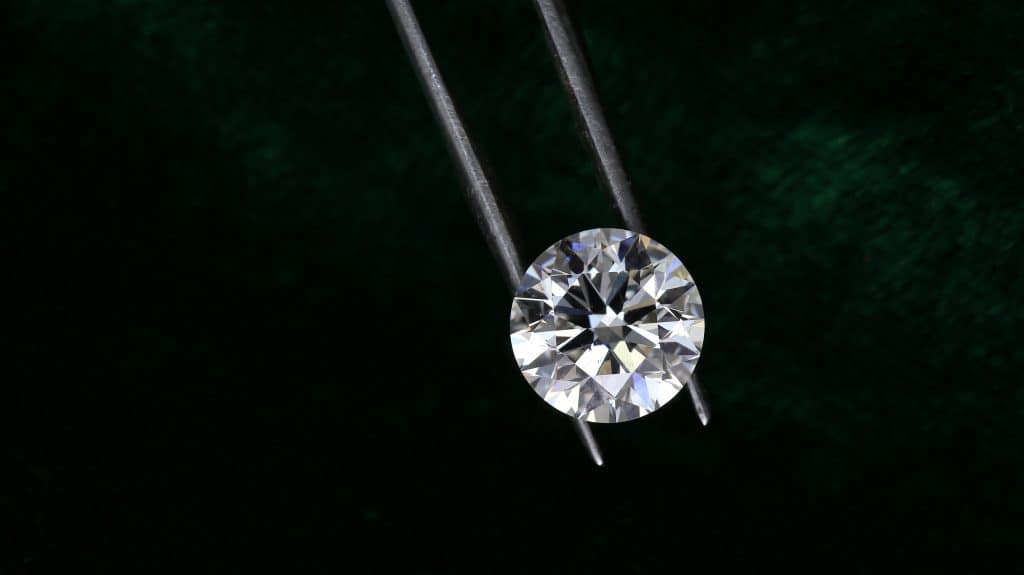
New treatments are making it increasingly difficult to tell the difference between natural and ‘enhanced’ diamonds. Dealing with diamonds comes with a number of risks which could potentially cause a real headache for your business. One such risk is the new era of rapidly evolving diamond treatments.
The beauty and rarity of diamonds and gemstones is what imparts their value. Therefore it’s not surprising that many treatments have been developed over the years to make not-so-great looking stones look better.
Gemstone treatments in themselves are not necessarily bad. The problem with them exists when a seller, either knowingly or unknowingly, doesn’t disclose them to a buyer who believes he is buying a 100 percent natural diamond.
In diamonds, treatments are used to improve clarity, remove colour, or add and/or enhance colour.
Simple treatments include; putting foil on the back of stones to enhance brilliance or add colour; coating a diamond with blue fluoride or applying indelible blue ink to pavilion facets to make it appear whiter; or applying nail varnish to improve fancy colours.
While these treatments aren’t in common use today they may appear from time to time in older jewellery and can be picked up with an experienced eye and hand lens.
Newer coating treatments are certainly harder to detect – particularly as stones as small as one point can be successfully treated nowadays.
Colour enhancements
Detection of colour enhancement became more difficult in the early 1900s with the discovery that irradiation and heat treatments could produce a wide range of colours: yellows, reds, pink, blue, browns and green.
The latest development in enhancing and adding colour in diamonds is High Pressure, High Temperature (Heat) or HPHT. The treatment is exactly as the name suggests: diamonds are heated to over 2000 degrees and then subjected to pressures above 60,000 atmospheres.
While a lot of jewellers know to look out for and ask if a fancy coloured diamond is treated, many may not realize that HPHT can also be used to lighten or ‘whiten’ lower colour grade diamonds. Both irradiated and HPHT treated diamonds are detectable only with gemmological equipment and training. It is also worth noting that after testing for colour enhancement a stone should also be tested to see if it’s a synthetic diamond.
Clarity Enhancement
Unfortunately the detection of clarity enhanced diamonds is as problematic as identifying colour enhanced diamonds.
Laser drilling is perhaps the most common form of clarity enhancement in diamonds. The laser vaporises and dissolves dark inclusions leaving only a very fine drill hole, near invisible to the naked eye, as evidence.
Another common clarity enhancing treatment is to use a special substance that is forced into surface reaching cracks and fractures in a diamond. This disguising agent is very effective in making these cracks almost invisible to normal inspection so the diamond appears much better than it actually is.
If it isn’t detected, clarity treatment can be costly. Laser-drilled and fracture-filled diamonds don’t have the same stability as untreated diamonds. This makes a clarity enhanced diamond an unpredictable quantity when exposed to heat or ultrasonic cleaning.
For example, a client coming to your store with a one carat diamond in a ring might require a small repair which requires heating of the diamond. This would normally not be an issue but due to the foreign substances present in the diamond the heat and pressure on the diamond could cause it to explode, or at the very least affect the filler so that disguised inclusions are visible again.
Staying Ahead
In conclusion improvements in technology are making definitely making diamond treatments harder to detect. Gemmological training and keeping abreast of the latest developments is your best defence. Advanced diamond technology training is even better. If you don’t have the skills to detect what’s out there, make sure you are buying from someone who does and obtain certification from a reputable lab whenever possible.
All diamond treatments should be fully disclosed to clients. Failure to do so will erode consumer confidence and your reputation, which is bad not only for you but the industry as a whole.
For more information and courses visit www.gem.org.au